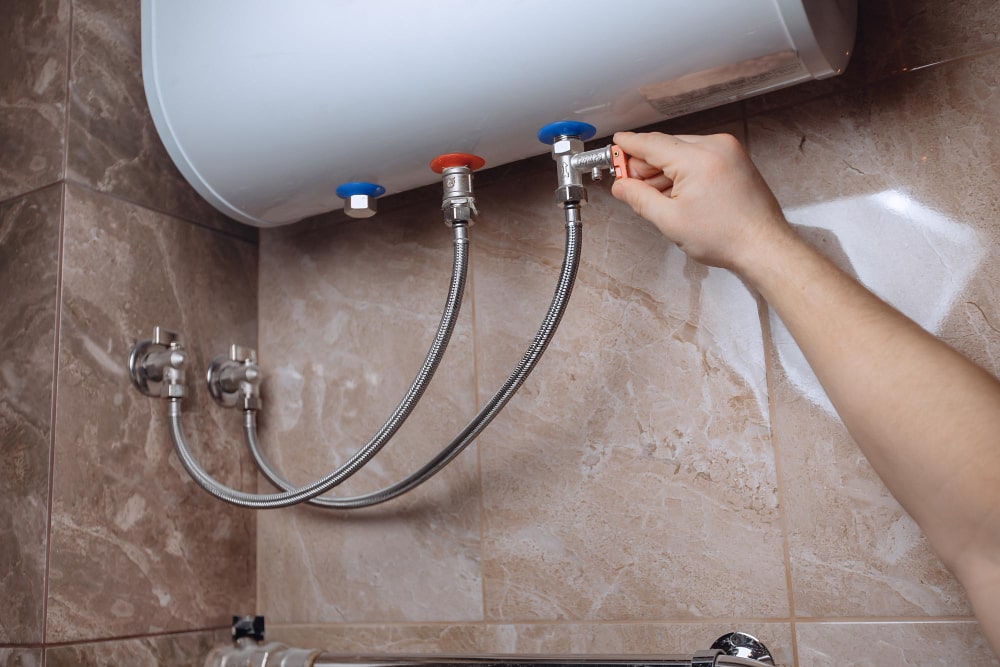Easy Ways to Maintain Your Home's Hot Water System Properly
Easy Ways to Maintain Your Home's Hot Water System Properly
Blog Article
Were you on the lookout for insight involving How to Maintain a Hot Water Heater in a Few Simple Steps?

Hot water is vital for daily convenience, whether it's for a rejuvenating shower or washing recipes. To ensure your hot water system runs successfully and lasts much longer, routine upkeep is crucial. This short article provides functional suggestions and understandings on exactly how to maintain your home's warm water system to prevent disruptions and pricey repairs.
Introduction
Keeping your home's hot water system might seem overwhelming, however with a few straightforward steps, you can guarantee it operates efficiently for many years to come. This overview covers everything from comprehending your hot water system to DIY upkeep suggestions and knowing when to call expert aid.
Value of Maintaining Your Hot Water System
Normal maintenance not just extends the lifespan of your warm water system but likewise guarantees it operates successfully. Neglecting maintenance can bring about decreased performance, higher energy costs, and even early failure of the system.
Indicators Your Hot Water System Requirements Upkeep
Knowing when your warm water system needs attention can stop major concerns. Look out for indicators such as inconsistent water temperature level, unusual noises from the heating system, or rusty water.
Comprehending Your Warm Water System
Before diving into upkeep tasks, it's handy to comprehend the standard components of your warm water system. Generally, this consists of the hot water heater itself, pipelines, anode poles, and temperature level controls.
Monthly Maintenance Tasks
Regular monthly checks can assist catch small issues before they escalate.
Flushing the Water Heater
Flushing your water heater eliminates debris build-up, improving efficiency and prolonging its life.
Checking and Replacing Anode Rods
Anode rods prevent rust inside the storage tank. Checking and changing them when worn is vital.
Evaluating and Readjusting Temperature Level Settings
Readjusting the temperature level setups makes certain optimum efficiency and security.
DIY Tips for Maintenance
You can execute numerous upkeep jobs yourself to maintain your warm water system in leading problem.
Looking for Leakages
On a regular basis evaluate pipelines and links for leaks, as these can bring about water damages and greater expenses.
Evaluating Pressure Relief Valves
Examining the pressure relief valve guarantees it operates properly and avoids excessive pressure build-up.
Insulating Pipelines
Shielding warm water pipes reduces warmth loss and can conserve energy.
When to Call an Expert
While DIY maintenance is beneficial, some concerns need professional proficiency.
Facility Issues Calling For Expert Help
Instances include significant leakages, electrical problems, or if your hot water heater is regularly underperforming.
Regular Expert Maintenance Conveniences
Expert upkeep can consist of complete evaluations, tune-ups, and ensuring conformity with safety criteria.
Final thought
Routine maintenance of your home's warm water system is vital for performance, longevity, and expense savings. By adhering to these ideas and knowing when to look for professional aid, you can guarantee a reliable supply of hot water without unexpected disturbances.
Water Heater Maintenance Tips
Test the TPR Valve
Shut off the power and the cold-water supply valve. Place a bucket under the pipe connected to the temperature-pressure-release (TPR) valve on the top or side of the tank. (This valve opens if the tank pressure gets too high.) Lift the valve’s tab to let some water out, then let go. If water keeps flowing, drain the tank partway, unscrew the old valve with a pipe wrench, and install a new one. Check the Anode Rod
Put a hose to the tank’s drain cock and let out a few gallons of water. Now fit a 1 1/16-inch socket onto the rod’s hex head on top of the heater (or under its top plate) and unscrew the rod. If it’s less than ½ inch thick or coated with calcium, buy a new one, wrap its threads with Teflon tape, put it back in the tank, and tighten securely. Use this segmented rod if headroom above the tank is limited. Drain the Tank and Wash Out Sediment
Drain the remaining water in the tank into the bucket, then stir up the sediment on the tank’s bottom by briefly opening the cold-water supply valve. Drain and repeat until clean water comes out of the hose. Close the drain cock, refill the tank, and turn its power back on. Adjust the Temperature
Find the temperature dial on the side of the tank and unscrew its cover. Adjust the dial to 120 degrees using a flathead screwdriver. For every 10 degrees the temperature is lowered, you can expect to save up to 5 percent in energy costs. Turn the water heater off or the thermostat down to its lowest setting if you plan to be away from home for more than three days. Insulate the Pipes
Buy some self-sticking 3/8-inch-thick foam pipe insulation that matches the pipes’ diameter. Slide the foam over the hot-and cold-water pipes as far as you can reach. Insulating the cold-water pipe prevents condensation in summer. Peel the tape and squeeze the insulation closed. If the pipe is 6 inches or less from the flue, cover it with 1-inch-thick unfaced fiberglass pipe wrap. https://www.thisoldhouse.com/plumbing/21016402/how-to-maintain-a-water-heater

I am just very occupied with Tips For Maintaining Your Hot Water Heater and I really hope you enjoyed the new entry. Loved our content? Please share it. Help other people locate it. I thank you for reading our article about Tips For Maintaining Your Hot Water Heater.
Go Company Report this page